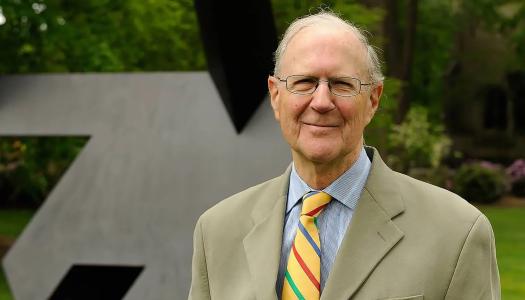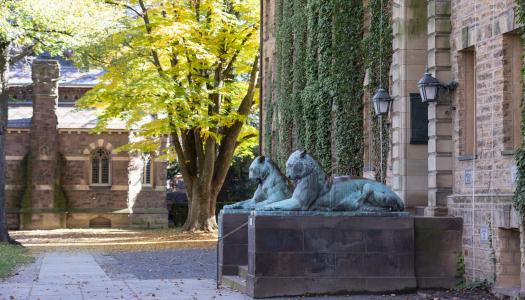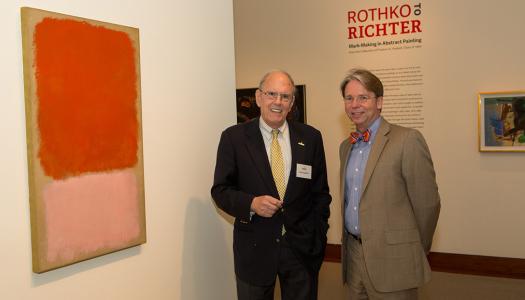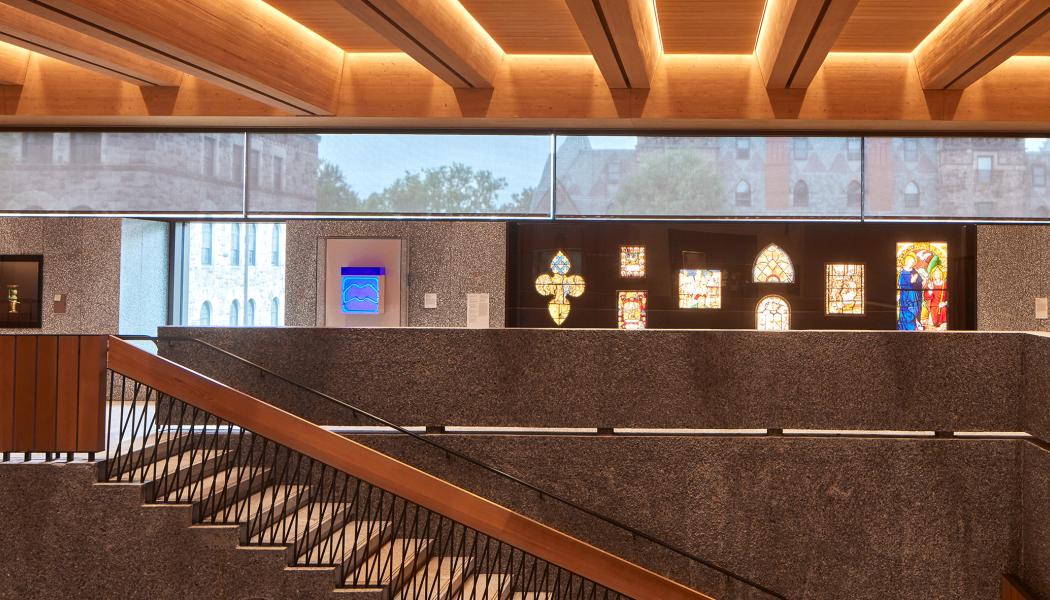
The Nancy A. Nasher & David J. Haemisegger Family Hall and Grand Stair connects visitors to the immersive art experience that unfolds as they approach the Susan & John Diekman Gallery on the second floor. Princeton University Art Museum, 2025. Courtesy of the Princeton University Art Museum. Photo: Richard Barnes
A series of gifts during the Venture Forward campaign have named spaces dedicated to exhibition, object study, education, convening and conservation within the new Princeton University Art Museum, which will open its doors to the public on Oct. 31.
“These extraordinary gifts reflect a tremendous well of support for the arts and humanities among members of the Princeton University community,” said President Christopher L. Eisgruber ’83. “At a time of increased scrutiny for higher education, the generosity of our alumni and friends is a resounding affirmation of the importance of these disciplines in advancing Princeton’s mission of teaching, research and service.”
Leadership gifts from Nancy A. Nasher ’76 and David J. Haemisegger ’76, Preston H. Haskell III ’60, and the Fisher family; major gifts from Theodora D. Walton ’78 and William H. Walton III ’74, Yan Huo *94, Louisa Stude Sarofim P86 and The Anschutz Foundation; and significant gifts from many other donors provided philanthropic support for the new 146,000-square-foot facility, which has transformed the Art Museum and amplifies its efforts to educate, challenge and inspire scholars, students and the public.
The new Art Museum, located in the footprint of its predecessor at the heart of the Princeton campus between Elm Drive and Chapel Drive along McCosh Walk, roughly doubles the space for the exhibition, conservation, study and interpretation of the Museum’s globe-spanning collections, and includes a new array of social gathering spaces and visitor amenities. Gallery space has grown from 17,000 to 80,000 square feet.
Announced in 2018, the project has been overseen by James Steward, the Nancy A. Nasher–David J. Haemisegger, Class of 1976, Director of the Art Museum, and University Architect Ron McCoy *80. The three-story building was designed by the architectural firm Adjaye Associates, in collaboration with executive architects Cooper Robertson. The complex is shared with the Department of Art & Archaeology and Marquand Library.
The design of the new building allows the new Art Museum’s collections to be exhibited substantially on a single level, shaping new ways of encountering art, juxtaposing cultures and ideas, and fostering new modes of storytelling and interpretation. The space fosters moments of discovery and surprise for visitors.
“Because of the generosity of so many alumni and other friends, our campus community and visitors will have the opportunity to explore the world’s cultural production in ways usually possible only in our greatest national museums,” said Steward. “Designed from the inside out, the new building places 95% of its galleries on a single level, where works of art from disparate places and moments can talk with each other in powerful ways. This museum, and the incredible philanthropy that helped make it possible, provide a bold affirmation of the value we place at Princeton on a humanistic education.”
The Art Museum’s design concept embodies flexibility, openness and connectivity, welcoming visitors from all directions with entrances on every side. Occupying three stories, nine primary interlocked pavilions contain many of the building’s new galleries, interspersed with more intimate gallery spaces, including three so-called viewing rooms, wood-lined spaces that offer moments of rest and reflection as well as views onto Princeton’s historic campus.
Facing historic campus buildings such as Murray Dodge and accessible via McCosh Walk, a banner encourages visitors to “Find Yourself Here,” as they pass into the main entrance, exuberantly welcomed on their way in by a monumental mixed-media wall relief by artist Nick Cave titled “Let me kindly introduce myself. They call me MC Prince Brighton,” commissioned for the new Art Museum.
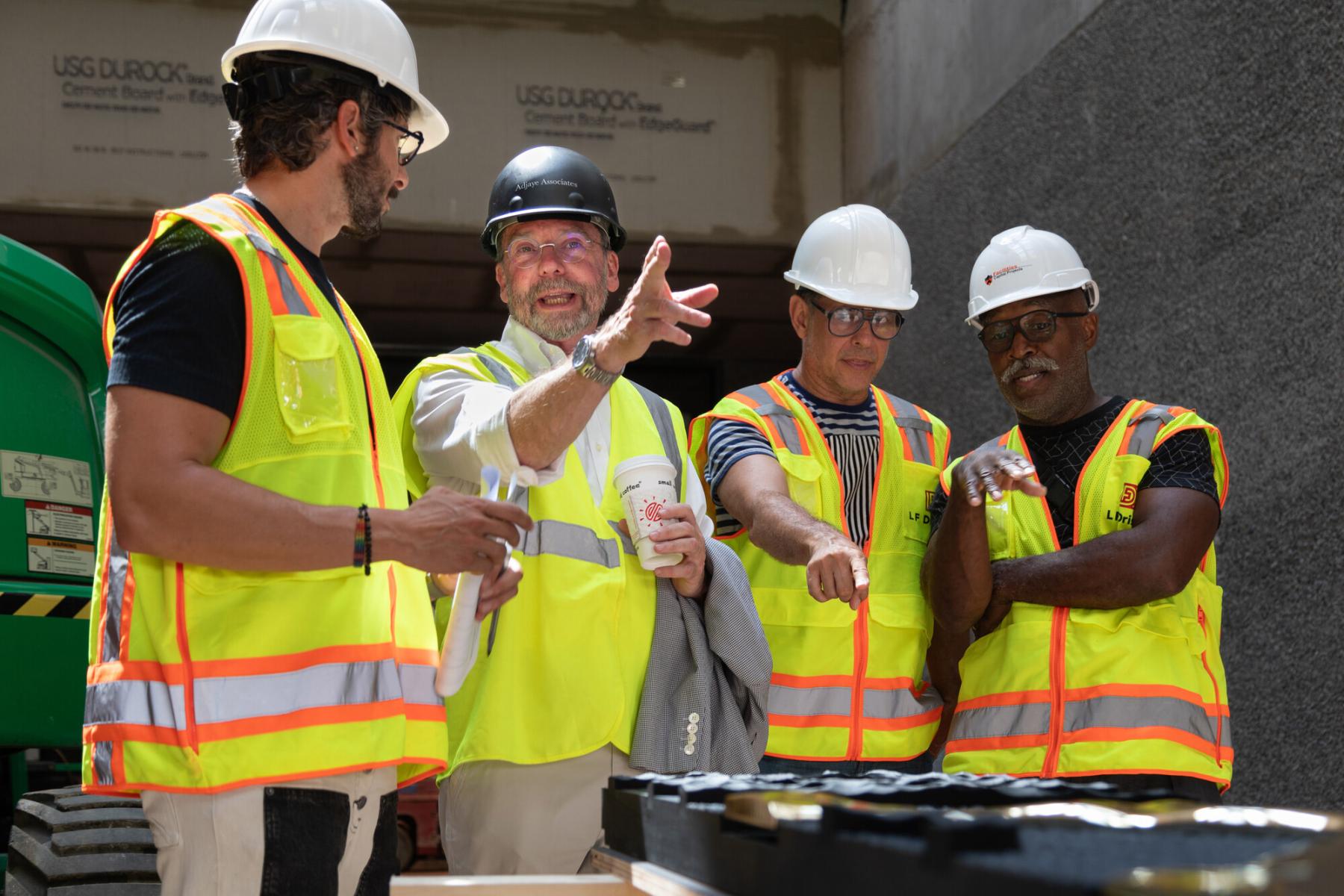
Inside the entrance hall, soaring, light-filled spaces on the first floor feature terrazzo and hardwood flooring and massive timber framing as well as sightlines to the art galleries above. Opposite the entrance hall is the Grand Hall, supported by a leadership gift from the Fisher family, including Doris and Don Fisher h76, Bob Fisher ’76, Bill Fisher ’79 P14, John Fisher ’83 P16, Shane Wilkinson ’13 and Remy Fisher Wilkinson ’14. The Grand Hall provides welcoming and expansive multi-purpose space for lectures, performances and events, as well as for informal social gathering. The Grand Hall soars to a stunning three-story height and features the building’s most complex feat of engineering: load-bearing stone aggregate forms floating buttresses, massive timber beams add warmth and skylights usher in daylight to the space below.
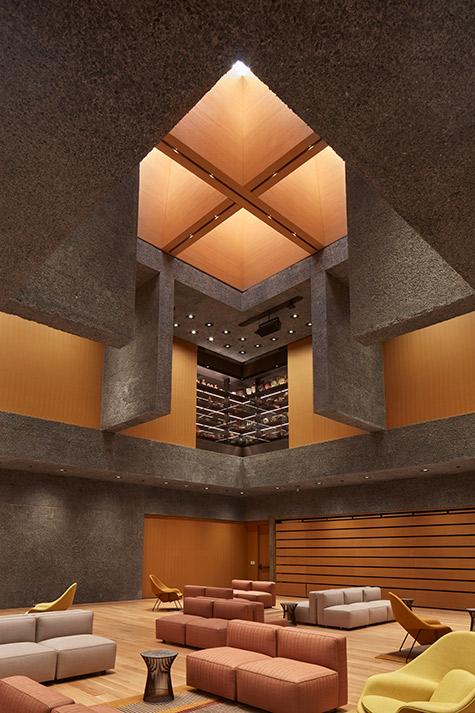
The first floor also includes numerous classroom spaces, two creativity labs, the Museum Store, and ground-level entrances to intersecting “artwalks” on each side of the Art Museum. The Loevner Artwalk, named for a gift from Catherine and David Loevner ’76, offers visitors a direct pathway through the facility and connects the building with major campus walkways.
As the new home of the Department of Art & Archeology, the Art Museum includes expanded instruction and research spaces. The Haskell Education Center, named for a leadership gift from Preston Haskell, is located on the first level and includes 10 differently scaled and equipped teaching spaces: two creativity labs, two seminar rooms, a 70-seat auditorium and five object-study classrooms where students can investigate works of art in the original that would normally be behind glass in more traditional settings.
To the right of the entrance hall, the Nancy A. Nasher & David J. Haemisegger Family Hall and Grand Stair is a defining element of the new Art Museum, connecting visitors to the immersive art experience that unfolds as they approach the second floor. Embedded in the wall opposite the Grand Stair is a 16th-century Mallorcan staircase, providing an initial art-historical and architectural conversation between the building and its collections.
Past the Grand Stair is the David Nasher Haemisegger Gallery, a stone-walled, light-infused space named for Nasher and Haemisegger’s son that provides open views onto the campus in three different directions. The gallery will feature changing exhibitions that provide an essential vision of the Art Museum’s mission; the inaugural exhibition showcases works by Toshiko Takaezu (1922-2011), Princeton faculty member from 1967 to 1992 and considered one of the 20th century’s greatest abstract artists and ceramicists.
Both the Grand Stair and the gallery are named for a leadership gift from Nasher and Haemisegger, long-time supporters of Princeton and the Art Museum who are members of the Museum’s advisory council and previously established the Nancy A. Nasher–David J. Haemisegger, Class of 1976, Directorship held by Steward.
At the top of the Grand Stair, the Susan & John Diekman Gallery, named for a gift from Susan Diekman and John Diekman ’65, juxtaposes art works in conversation with one another and introduces visitors to the breadth of the Art Museum’s collections, which are among the most diverse on any university campus. John Diekman chairs the Museum’s advisory council, and the Diekmans have provided sustained volunteer leadership for the Museum in addition to their philanthropic support.
As visitors proceed from the gallery on the second floor, they will encounter the nine pavilions, seven of which are dedicated to gallery space, experiencing an entirely new curatorial design that encourages dialogue among works of art from the Art Museum’s globe-spanning collections representing a broad array of cultures, forms and traditions.
The Huo Pavilion is named for a major gift from Yan Huo *94, and contains three galleries dedicated to Asian art. From an exquisitely curated Asian collection of snuff bottles, netsuke, and other works termed “the world in miniature” to tea ceremony vessels and contemporary black and white photography, the extensive collections represented within the Huo Pavilion galleries are inclusive of many Asian cultures, eras and art forms. Huo is a University trustee, co-chair of the upcoming “Many Minds, Many Stripes” conference celebrating graduate alumni, and has made other significant gifts to the University.
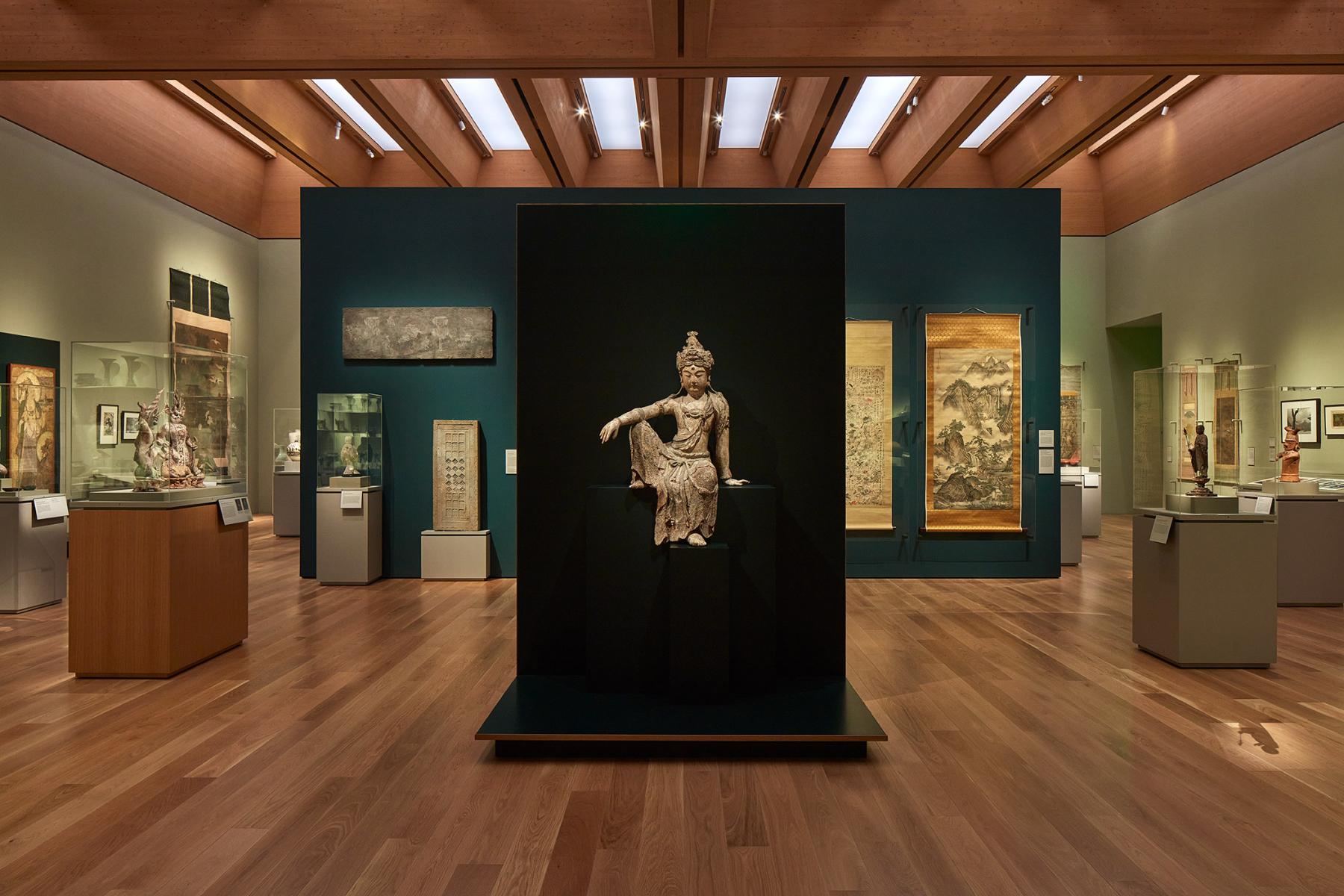
The Wilmerding Pavilion is dedicated to American art and named for a major gift from Louisa Stude Sarofim, who chose the name to honor the late John Wilmerding, the renowned scholar, curator, collector and philanthropist. Wilmerding served from 1988 to 2007 as Princeton’s inaugural Christopher Binyon Sarofim ’86 Professor in American Art, the first endowed position exclusively devoted to the teaching of American art at any university. The Wilmerding Pavilion comprises five galleries for American art, named for a major gift from The Anschutz Foundation, with individual galleries named for The Anschutz Foundation, the Anschutz family and the Anschutz-Hunt family, including Philip and Nancy Anschutz, Sarah Shaw Anschutz ’93, Libby Anschutz ’96, William Philip Austin Hunt ’21 and Eleanor Marie Hunt ’25.
The Theodora Walton and William Walton III Pavilion, named for a major gift from Dori Walton ’78 and Bill Walton ’74 and their children, is dedicated to modern and contemporary art and contains three galleries and an adjacent more intimately scaled viewing room. Visitors will encounter a wall-sized Basquiat painting in conversation with contemporary ceramics and sculpture as they enter the galleries, as well as a monumental mixed media piece by El Anatsui that provides a greatly expanded experience of modern and contemporary art compared to the previous Museum space. Bill Walton is a member of the Art Museum’s advisory council and the Waltons have served in many volunteer leadership roles and made other significant gifts to the University.
The Allen Adler & Frances Beatty Adler Gallery is one of three spaces in the new Art Museum allocated to changing exhibitions. The gallery is named for a gift from Allen Adler ’67 and Frances Beatty Adler, who previously endowed a curatorial and lectureship position at the Art Museum in addition to other significant gifts to the University. Their gift also supported the Allen Adler & Frances Beatty Adler Director’s Suite in the new Museum, and Allen Adler is a member of the Museum’s advisory council.
Also on the second floor, the Paul & Heather Haaga Conservation Studios, named for a gift from Paul G. Haaga Jr. ’70 and Heather Sturt Haaga, is a state-of-the-art conservation center designed to enable the care and conservation of diverse collections and provides multidisciplinary research and teaching space. It features individual spaces dedicated to the conservation of paintings, objects and works on paper. Heather Haaga is a member of the Art Museum’s advisory council.
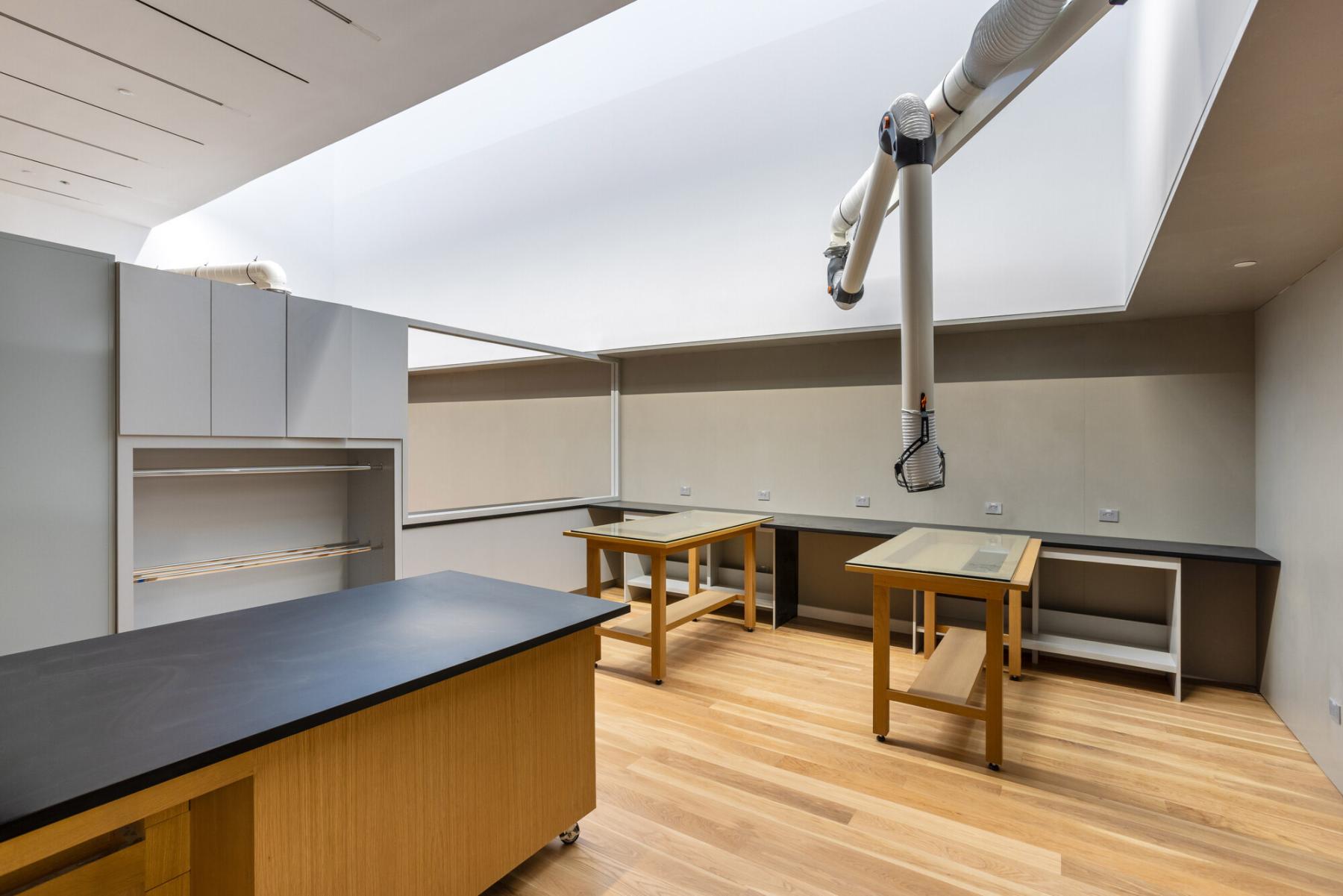
Other important gifts for exhibition space are recognized by the naming of the William R. Elfers Gallery and the Duane Wilder Gallery, both located in the European Pavilion, the Christina Lee Gallery in the Huo Pavilion, the Howard Mele Gallery near the Haaga Conservation Studios, and the Sueyun & Gene Locks Gallery.
Gifts for spaces dedicated to object study are recognized by the naming of the Leonard Bernheim Object Study, the Nancy C. Lee Object Study, the Alan Lo Object Study and the Annette Merle-Smith Object Study. Gifts for spaces dedicated to education and creativity are recognized by the naming of the Laporte Family Creativity Lab, the Kathleen Compton Sherrerd Creativity Lab, the Malkin Amphitheater, the Maritz Seminar Room and the Tuttle Lecture Hall.
Gifts for spaces dedicated to contemplative viewing are recognized by the naming of the John Cecil & Celia Felsher Viewing Room, the Stacey & Robert Goergen Jr. Viewing Room, and the Hans & Donna Sternberg Viewing Room.
Gifts for administrative spaces are recognized by the naming of the Louise Sams Executive Conference Room, the Edward E. Matthews Reception Area, the Juan & Marianna Sabater Staff Hub and the Christopher Olofson Conference Room.
Spaces in the new Art Museum were also named honorifically for Peter B. Lewis and Mitchell Wolfson Jr.
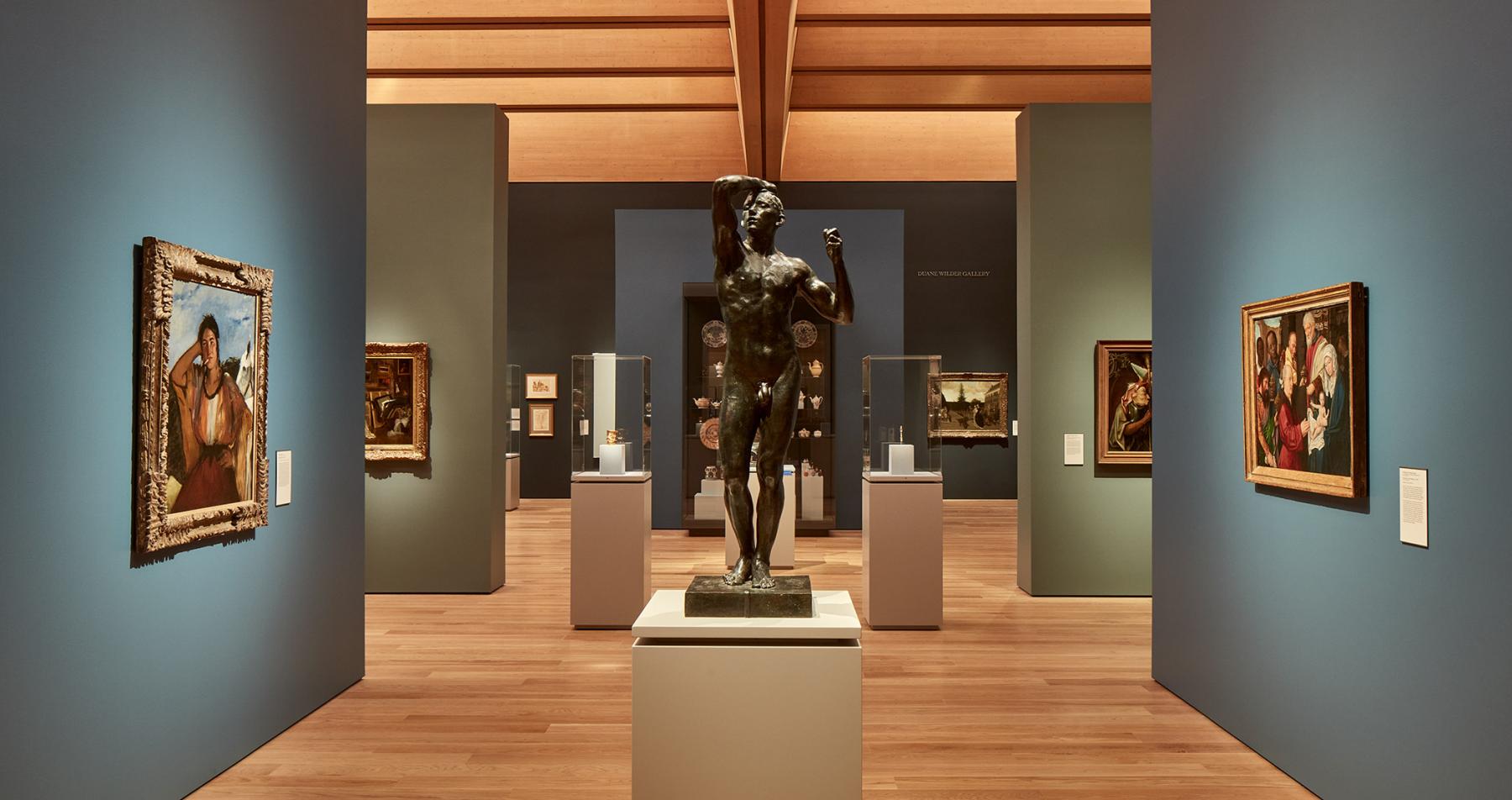
The new Princeton University Art Museum will open to the public on Oc. 31, with a 24-hour open house that will welcome visitors to explore the galleries and feature such activities as family-friendly art making, a Halloween costume contest, film screenings, poetry readings, skygazing, a dance party, live performances, storytelling and wellness activities.. The public grand opening will launch a season of special exhibitions. The Art Museum website has details on the public opening, including dates for the inaugural exhibitions.
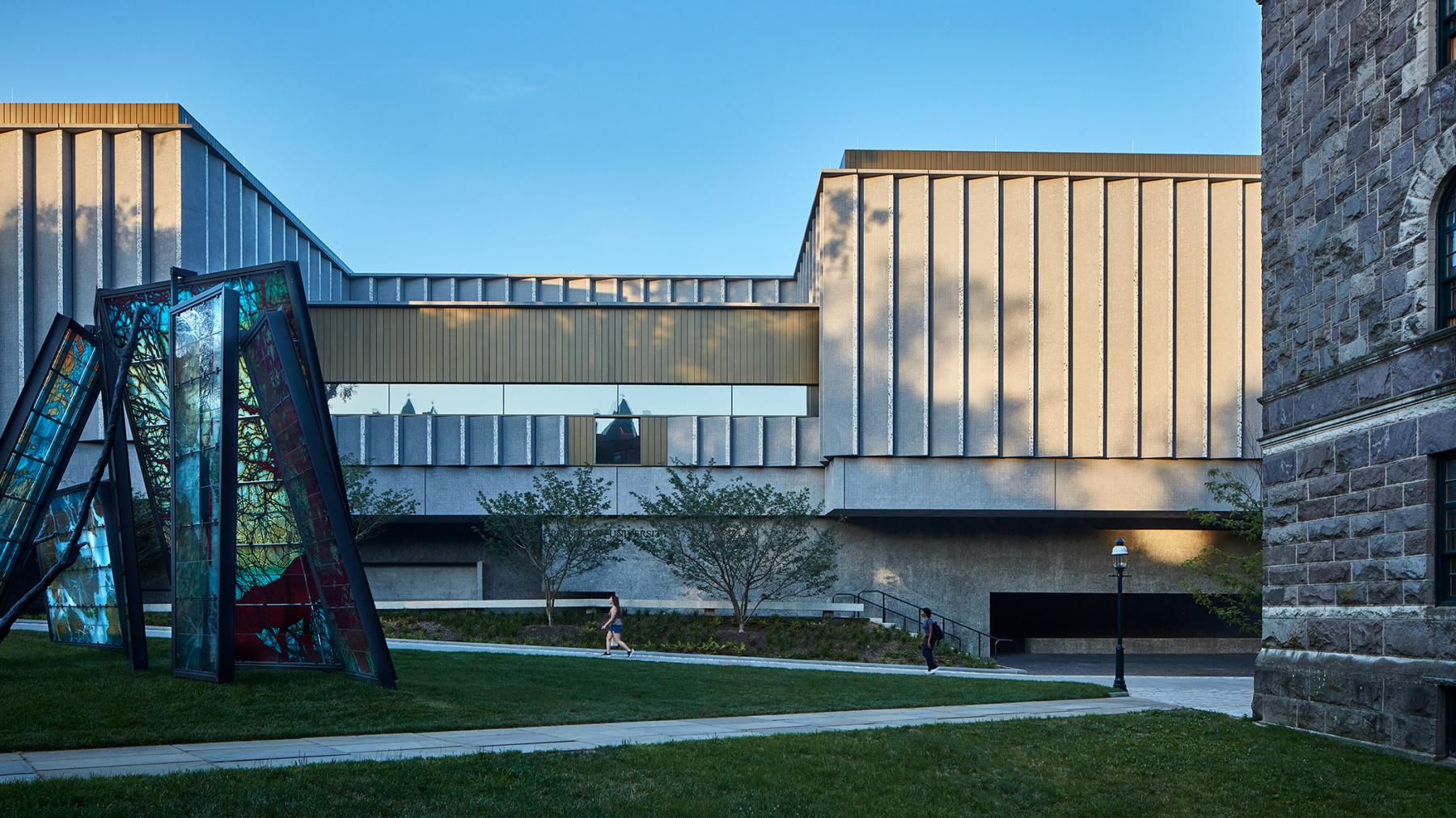
The Venture Forward campaign, which successfully concluded June 30, supported the University’s strategic framework, and its fundraising and engagement initiatives aligned with the key focus areas of that plan: college access and affordability, financial aid, data science, bioengineering, the environment, the humanities and other important areas of inquiry that characterize Princeton’s commitment to the liberal arts.
